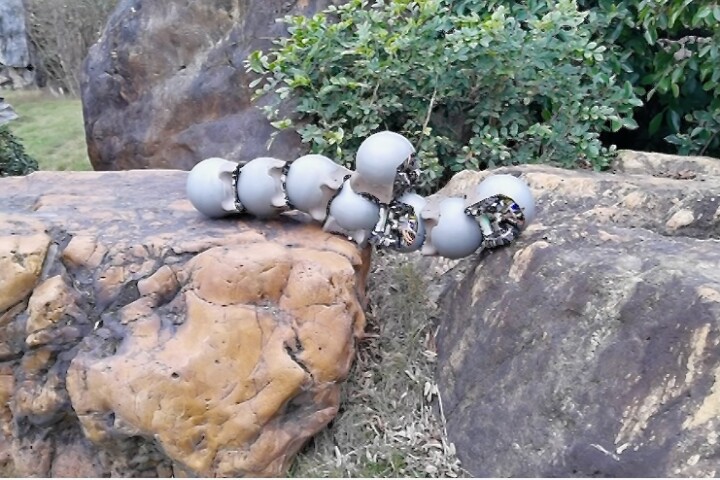3D-printed motorcycle earmuffs that suppress traffic and wind noise while amplifying car horns, and objects encoded with unique audio barcodes are just a couple of the devices that could be on the way, thanks to a new system designed by researchers at Columbia University, MIT and Disney Research that allows specific acoustic properties to be implanted into 3D-printed objects.
"With 3D printers today, geometric complexity is no longer a barrier," says Changxi Zheng, the Columbia Engineering researcher leading the project. "Even complex shapes can be fabricated with very little effort. So the question is: can we use complex shapes to improve acoustic properties of products?"
"Acoustic voxels" are the core of the system. These are hollow cube-shaped chambers which can filter sound waves according to their size, shape and the way they connect to each other. With the help of a new algorithm, complex structures of these modules can be set up to produce the desired acoustic filtering effects, which can be embedded within 3D-printed objects.
"The general approach to manipulating sound waves has been to computationally design chamber shapes," says Zheng. "Our algorithm enables new designs of noise mufflers, hearing aids, wind instruments, and more – we can now make them in any shape we want, even a 3D-printed toy hippopotamus that sounds like a trumpet."
Those toy hippo trumpets might look familiar: Disney researchers demonstrated similar-looking 3D-printed speakers a couple of years ago that made use of the acoustics of any shape, but this new research takes a very different approach.

The acoustic voxels system can be embedded into an object regardless of its shape, so two toy octopi can look identical on the outside, but have vastly different acoustics when tapped or blown into. That process can lead to objects with unique audio signatures.
"We also have proposed a very intriguing new way to use acoustic filters," says Zheng. "We can use our acoustic voxels as acoustic tags, unique to each piece we 3D print, and encode information in them. This is similar to QR codes or RFIDs, and opens the door to encoding product and copyright information in 3D printing."
Voxel structures could also be designed to suppress or amplify specific frequencies, leading to more efficient engine mufflers, or motorcycle earmuffs that could minimize traffic and wind noise but allow the sounds of honking cars to get through. In future, ultrasound waves are the next target for the project.
"We are investigating some of the intriguing possibilities of ultrasonic manipulation, such as cloaking, where sound propagation can be distorted to hide objects from sound waves," says Zheng. "This could lead to new designs of sonar systems or underwater communication systems. It's an exciting area to explore."
The team explains the project in the video below, and will present the research at the SIGGRAPH 2016 conference next week.
Source: Columbia Engineering









